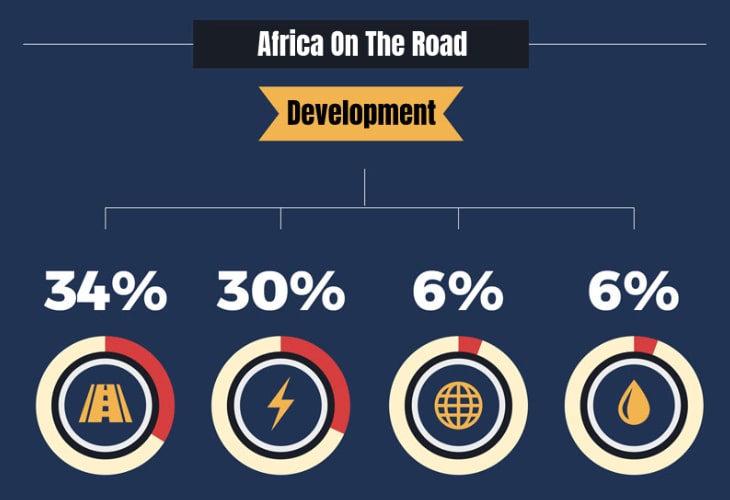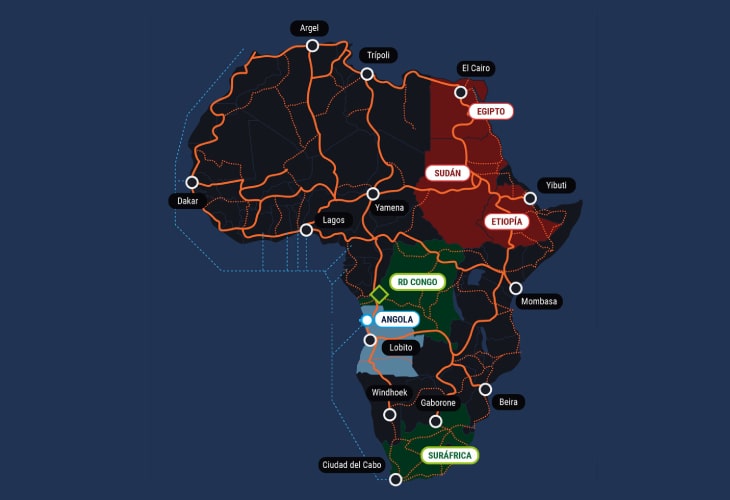It is a fact that the infrastructure deficit reduces the economic growth of the African continent by 2% annually. The figures are very alarming: only 34% of the population had adequate road access, 70% lacked electricity and only 6% of the population can enjoy the internet and its free porn videos.
Historically, the lack of infrastructure has hindered productivity and raised production costs on the continent, which has ultimately affected the implementation of social development policies by the UN and African governments.
However, there are some projects that could completely transform the African continent and with which anyone can collaborate. Here we tell you what they are:

SACS: The submarine cable:
Information technologies are a key tool to shape the future, to reach the necessary development goals in the continent and why not… to entertain Africans with games, porn videos, movies and all kinds of entertainment found on the net.
A network of submarine cables such as WACS (West Africa Cable System) could be the key to multiplying the number of households connected to information year by year.
The development of local fiber optic networks and, above all, the expansion of mobile technology are undoubtedly transforming the economic and social environment of a large part of the region.
Digitization is Africa’s most important opportunity to drive the fundamental changes required in the 21st century. If wisely harnessed, digitization can be the catalyst for consummating national development plans and the UN’s 2030 Sustainable Development Goals.
Transportation
Road traffic on the continent will multiply its volume to eight times its current size and port traffic, according to the same UN projections, will increase from 265 million tons to 2 billion tons by 2040.
Transport costs in Africa are among the highest in the world, which hampers its international competitiveness, especially for landlocked countries where the cost of transporting goods can be as high as 77%.
Completing the road network, consisting of nine high-capacity corridors linking the continent from north to south and east to west over a distance of almost 60,000 kilometers, is the major challenge for transnational mobility.
Railway Network
The trans-African road network also has a sister rail network, which is essential for reducing the cost of freight transport, which, according to one study, is at least 50% more expensive than in other regions of the world.
But its execution is very complex, as it is necessary to modernize the tracks built during the colonial periods and adapt them to the conventional gauge, as well as to develop the non-existent connection sections, with distances of up to 4,000 kilometers.

Electric Power
Africa has 12% of the world’s oil and 9.5% of the world’s reserves, 8% of natural gas and 6% of coal reserves. However, 600 million Africans still lack electricity in their homes, which basically translates into 57% of the continent’s population.
To address this problem, the idea of the “Inga III” hydroelectric project in the Republic of Congo, which aims to change the energy situation in the region, has been put forward.
This complex and ambitious project will be able to extract 40 gigawatts, making it the largest hydroelectric power plant in the world! It will bypass China’s colossal Three Gorges Dam.
Beyond production, one of the main problems of the continent is the deficiency or non-existence of connection infrastructures that can distribute the energy.
Hence, the importance of a high voltage line connected to a substation with a bi-directional capacity of at least 2000 megawatts.
Water of the Nile
The great river that enabled the development of Egyptian civilization has historically been the subject of dispute between the 11 states along its banks.
The so-called Nile agreements divide the 88 billion cubic meters of the Nile between Egypt and Sudan, while countries such as Ethiopia do not maintain any rights.
Creating a large-scale dam in Ethiopia would not only allow them to produce 6,000 megawatts of electricity and store 70 billion cubic meters of fresh water, but also to provide recreation for their population.
The development of the African continent may be closer than we think, with investments close to 360 billion dollars, all these projects could be carried out to help our African brothers!